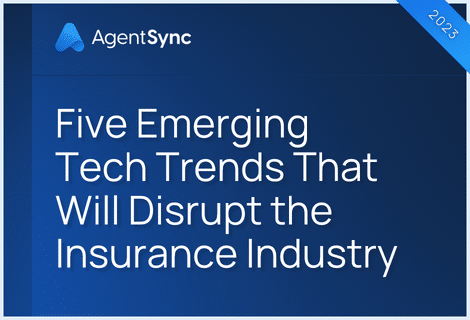

Insurance agencies can expect continued merger and acquisition activity and transfers via inheritance or sale in the years to come as older generations retire from the insurance industry. These agencies should consider the role their tech stack (or lack thereof) plays in its saleability.
Massive M&A
The Insurance Information Institute estimates there were around 36,500 independent insurance agencies in the United States in 2018. This number is down from over 38,000 agencies in 2017. The decrease in insurance agencies is widely attributed to the flurry of M&A activity experienced by the industry for the past several years.
In early-to-mid 2020, experts predicted the COVID-19 pandemic would put a damper on the industry’s robust M&A activity; however, this didn’t happen. By the end of the year, over $30 billion in mergers and acquisitions had taken place (up from $20.7 billion in 2019) – largely driven by investments in insurtech and private equity buyers.
In fact, according to Ernst & Young, “the need to quickly add digital capabilities in response to customers’ rapidly changing needs and expectations” was one of the primary reasons for many of the large mergers and acquisitions that happened in 2020. Simply put: insurtech matters!
In 2021, all signs point to the continuation of a large amount of M&A activity. As interest rates remain low and the insurance markets continue to harden, investors find the combination of cheap capital and higher agency revenues very attractive.
It’s not just larger mega-agencies and private equity investors who benefit from all this M&A activity. Small, independent agencies that have spent decades building their books of business now find themselves in an attractive position to sell a profitable agency just as their principals are looking to retire.
The role of technology in an attractive and saleable agency
Whether your agency is three years old or 30, the idea of one day selling it off may be on your mind. Many agency owners start out intending to build a business that will someday sell and provide a comfortable retirement for themselves and their families.

There are a few reasons agency owners may decide to sell their business: burnout, retirement, interest in new opportunities, and more. Likewise, there are a variety of factors that make any given agency attractive to buyers. Obviously, the agency’s profitability is a big one! Investors look for agencies with solid reputations, long-standing client and carrier relationships, low employee turnover, and clean financial records, among other things.
A less tangible aspect of how attractive an agency is to potential buyers is “the fit.” Company values and culture are often an important consideration for both the buyer and seller. But what about the technology fit? As independent insurance agencies become increasingly high-tech, the technological investments agency owners make can actually play a large role in the M&A decision-making process.
Regardless of the systems in place, integrating one agency into another is never “easy.” It can, however, be a lot less painful when the agency being acquired is thoughtful about its technology stack in the years before acquisition.
From the agency management system, to content management, to producer licensing and compliance solutions, agencies that invest in modern solutions and tools are already ahead of the competition when they’re considered for acquisition.
Consider two agencies that are both for sale: one kept its records on spreadsheets – or even paper files – for 30 years while the other invested in going paperless and other high-tech solutions at different points along the way. When you think about it from a potential buyer’s perspective, it’s obvious which agency will be more attractive.
An independent agency that goes fully digital promises an easier transition than one that’s still working the old fashioned way, and an easier transition is often worth a higher price.
For example:
- If the agency is already on a leading AMS, the buyer may not even have to migrate the agency to a new system.
- If agency staff are already tech-savvy and used to working in insurtech, the buyer won’t have to train employees from scratch in digital best practices, or convince them to adopt new technologies.
- If the agency uses technology to manage producer licensing, appointment, and compliance, the buyer can be confident that it’s not stepping into a compliance quagmire.
These are just several examples of how the technology choices an independent agency makes can directly affect its attractiveness to buyers.
Insurtech stack must-haves
So, what types of insurtech should you have in place to ensure your agency is as attractive to potential buyers as possible? Here are the top six types of technology a modern insurance agency is expected to possess.
Agency management systems
It might sound obvious but, believe it or not, some agencies are still managing without a management system! If your agency is one of them, now is the time to make the switch from paper files and spreadsheets to a modern and high-tech management system. This switch is time consuming and costly, so taking the plunge before buyers are looking at your agency is a smart move.
It’s also important to do your research and invest in the right agency management system. Because migrating from one to another is almost as difficult as getting on one in the first place! You may want to consider who your future potential buyers or investors may be, and choose a management system that they’re already using.
Customer relationship management system
The customer relationship management system (CRM) is a vital piece of technology for high-growth agencies. This type of system helps agents, producers, and account managers keep track of where each client or prospect is in the sales pipeline (and beyond).
While CRMs have been used in many industries for years, they are only now starting to become more commonplace within the insurance industry. More than ever, agencies are investing in CRMs to make their producers’ and account managers’ jobs easier and more automated – freeing up expert human time for the work that really matters.
Marketing and communication automation
It seems like everyone and their dog has a newsletter these days! Insurance agencies are no exception, and for good reason: customers often cite lack of communication and poor relationships as a top cause of attrition. In an attempt to build closer relationships with clients, many agencies are adopting modern technology to help.
Marketing and communications automation systems are sometimes found rolled into a CRM but they can also be standalone platforms. Either way, using technology to generate and nurture leads, convert those leads into clients, and grow the client relationship (and loyalty) over time are practices that buyers will appreciate when they evaluate your agency for a potential sale or merger.
Producer compliance management
The last thing a potential buyer or investor wants to do is walk into a compliance nightmare. For agencies of any size that are interested in M&A, a robust producer licensing and compliance management system can assure investors that they won’t be.
As opposed to an agency that keeps producer licensing, appointment, continuing education, and other information on a spreadsheet, an agency that’s managing its producers with technology can easily view the status of all agents in real-time. This also helps because M&A activity can often take months or even years. Investors want to know that the due diligence they performed at one point isn’t out of date a few months later. A compliance management system can easily and instantly show them that their desired agency is still in good standing across all states.
Cybersecurity

Human error is still the number one cause of cyber attacks. And, as far as we can tell, humans aren’t exiting the insurance industry any time soon. That means it’s up to agency leadership to invest in cybersecurity systems and practices to protect their own and their clients’ information against attackers – and employees who may accidentally enable them.
If your agency doesn’t have a strong cybersecurity system in place, potential buyers may be wary. There’s no way to show that information hasn’t been leaked or stolen, unbeknownst to anyone, prior to the sale. Cybercrime is expensive in both money and the cost to your agency’s reputation, so investing in protection is non-negotiable.
Document management and e-signing
In the olden days of insurance, offices were filled with filing cabinets full of paper. Then came the network shared drives, and finally, cloud storage. No matter where files are kept, people tend to make a mess out of them. In an industry where compliance with laws is paramount, messy files aren’t just a pain, but can really turn into a legal nightmare.
Modern document management systems are more than electronic filing cabinets. They use AI to categorize and sort, they attach relevant files to customer records, and they turn once-time-consuming business transactions into instant ones. Document management also includes the ability to e-sign, creating a streamlined process for contracts to be executed and properly stored and retained.
When it comes to a tech stack, there are countless products on the market. It can be overwhelming to say the least! However, if you’re an agency owner with hopes of being sold or acquired, these are the pieces of your tech puzzle you simply can’t ignore.
To level up your tech stack, see what kind of value AgentSync’s Manage product can add to your business.

